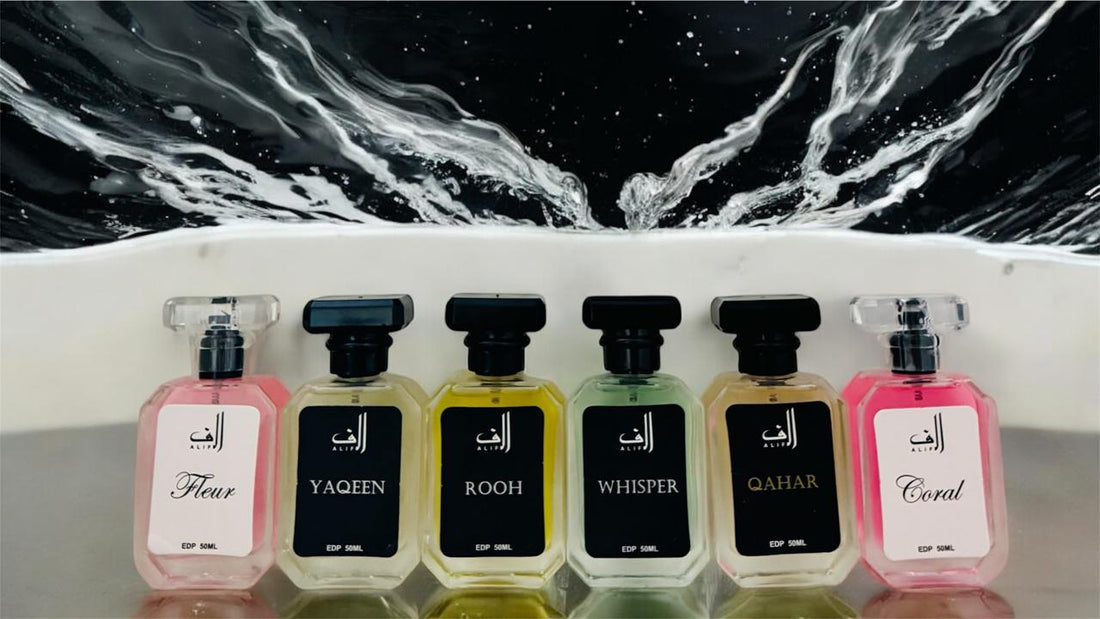
Understanding Fragrance Notes: How to Identify Top, Middle, and Base Notes
Share
When we talk about perfumes, we often hear terms like fragrance notes. But what do they really mean? In simple words, fragrance notes are the different layers of scents that make up a perfume. They are what we smell when we first apply the perfume and as it lasts throughout the day. There are three main types of fragrance notes: top, middle, and base notes.
Each of these notes plays an important role in how we experience a perfume. The top notes are what you smell first, but they fade away quickly. The middle notes, or the heart of the fragrance, emerge next and are usually the longest-lasting. Finally, the base notes provide depth and make the scent linger longer on your skin. Understanding these notes helps you find a perfume that suits your preferences. A perfume guide can help you choose the right one based on the scents you enjoy.
What Are Top Notes in Perfume?
When you first spray a perfume, the first scents you notice are called top notes. These are the initial impressions of the fragrance that hit your nose right away. Top notes are very light and often fresh, which is why they are the first scents we experience. However, they don’t last long and typically fade within 15 to 30 minutes.
Top notes are important because they create the first impression of a perfume. They are the “opening act” that sets the stage for the rest of the fragrance. These notes often include citrus scents, like lemon or bergamot, and fresh flowers like lavender or jasmine. They are designed to be sharp and refreshing, making you want to explore the scent further.
In the world of perfume, the fragrance pyramids show the different layers of a fragrance, starting with the top notes, followed by the middle and base notes. This layering helps the scent evolve and change over time, making the perfume experience more exciting.
The Heart of the Scent
When we talk about perfumes, the middle notes are often considered the “heart” of the fragrance. After the initial burst of top notes fades, the middle notes begin to take center stage, forming the main character of the perfume. They are what you smell once the perfume settles into your skin, and they usually last longer than the top notes.
These middle notes are responsible for the depth and personality of the fragrance. They blend smoothly with the initial scents and create a balanced, more rounded fragrance. For example, lavender gives a calming, floral touch, while rose adds a soft, romantic feeling to the scent. These notes can be floral, fruity, spicy, or even herbal, and they can make a perfume feel fresh or warm depending on the combination.
The scent structure of a perfume is built around these middle notes because they are the longest-lasting part of the fragrance. When you're identifying perfume notes, it's the middle notes you’ll usually recognize as the most dominant after the first few minutes of wearing the perfume. They help to bridge the top and base notes, making the transition between different layers of the scent smooth and natural. Understanding the role of middle notes can help you find a fragrance that feels balanced and full, offering a more lasting and memorable experience.
The Depth of Base Notes
When a perfume settles into your skin, the last layer of scent you experience is known as the base notes. These are the foundation of the fragrance and often provide the most lasting impression. Unlike the lighter top notes and the more balanced middle notes, the base notes emerge after these initial scents fade. They are the deepest, most rich scents that linger on your skin for hours, sometimes even a whole day.
Base notes are essential for giving a perfume its depth and warmth. They help to anchor the fragrance and make it feel more grounded. For example, vanilla brings a sweet, comforting scent, while musk offers a deeper, earthy aroma. Other common base notes include sandalwood, amber, and patchouli, all of which add complexity to the perfume.
In the perfume guide, you'll often find that the base notes are the final part of the fragrance layers, and they are what remain after the lighter top and middle notes have faded away. This is why base notes are so important—they help the perfume last longer and leave a lasting impression.
How to Identify Fragrance Notes When Choosing a Perfume
When it comes to identifying perfume notes, the best place to start is by understanding the fragrance pyramids. These show the three main layers of a perfume: top notes, middle notes, and base notes. By knowing how these layers work together, you can choose a fragrance that suits your preferences.
To begin, think about the top notes that you like. These are the first scents you smell and usually include fresh or fruity aromas like citrus or floral notes. After the top notes fade, the middle notes will come forward. If you enjoy scents like lavender or rose, look for perfumes with those middle notes. Finally, consider the base notes that will give the fragrance lasting depth, such as vanilla or musk.
